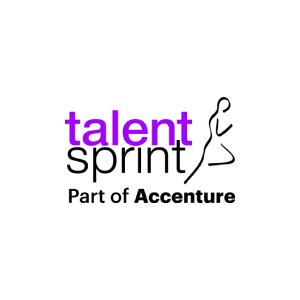Applications of Artificial Intelligence in Different Industries

It is no secret that artificial intelligence (AI) is revolutionizing businesses worldwide. AI helps businesses automate repetitive tasks, boost productivity, and reduce expenses. Thus, businesses are embracing these technologies to stay competitive in the market and thrive in the era of technological transformation.
Tech companies are increasing revenues from AI-related services. For instance, in a press release, Dell reported that the demand for AI-server orders reached USD 3.6 billion in Q3 of 2024, and the pipeline grew 50% across all types of customers. This indicates that the demand for AI-related services is increasing tremendously.
Furthermore, according to Stanford University’s AI Index Report 2024, the number of newly funded AI companies reached 1,812 in 2024, an increase of around 40% compared to the previous year. Thus, it is clear that the adoption of AI is increasing tremendously. So, without much ado, let’s dive in and explore the application of AI in different industries and sectors.
AI in Healthcare
AI is there to boost productivity, and with its hyper-speed, AI is transforming healthcare delivery. Its application can be seen in different areas of healthcare, as noted below:
- AI-Driven Diagnostics: AI can help healthcare professionals analyze patient records. These analyses are fast and free from human error, improving healthcare delivery and optimizing patient experience.
- Drug Discovery: AI models, like Generative AI, are proving to be game-changers in drug discovery. These tools can accelerate the research process and reduce the time it takes to discover drugs from years to months.
- Virtual Nursing Assistants: Many hospitals utilize virtual assistants to ensure that waiting time for patients is reduced. Apps like Ada Health and Babylon Health use AI to offer preliminary diagnostic advice to patients.
- Predictive Analytics: Researchers in healthcare are increasingly utilizing AI tools to analyze data, which can help predict future pandemic outbreaks. Furthermore, by utilizing AI to analyze patient records, potential diseases can be ascertained.
- Personalized Treatment: AI tools can provide insights based on data analysis, which can help personalize treatments for patients and improve healthcare outcomes.
If you’re a healthcare professional looking to enhance your AI expertise, then you can consider enrolling in the AI for Digital Health and Imaging Course by CCE at IISc.
AI in Retail
The application of AI can be seen in retail and e-commerce, too. Companies are utilizing AI tools to enhance customer experience and streamline operations. According to Capgemini, by 2025, 77% of retailers will implement AI in their business operations. Here are some key examples:
- Personalized Recommendations: E-commerce businesses are significantly utilizing AI tools, and one key application of AI tools in e-commerce is personalized recommendations. E-commerce businesses like Amazon, Flipkart, and Myntra utilize AI tools to analyze customers' search and purchase histories and preferences and create personalized recommendations for them.
- Inventory Management: Retailers utilize AI for inventory management. AI tools can be used to analyze historical data and forecast future demand based on which inventory can be maintained.
- Customer Experience: AI tools are also utilized to analyze customer data and refine marketing strategies accordingly.
AI in Manufacturing
For manufacturers, AI is crucial, as it helps businesses drive efficiency and innovation in manufacturing and streamline processes.
- Predictive Maintenance: AI can be utilized for predictive maintenance; for instance, GE Vernova uses AI to predict machine and equipment failures and reduce downtime.
- Quality Control: Many businesses use AI for quality control, as it can be applied throughout the production line, and with the help of AI, errors in the production line can be detected with precision.
- Demand Forecasting: AI is capable of predicting, so predictive analytics for future demand can be carried out with the help of AI, which can help in matching production with customer demand. For example, Siemens also employs AI to match production levels with customer demand.
AI in Banking, Financial Services, and Insurance
We have already seen how Fintech players are shaking up the turfs of legacy banks and traditional BFSI players. All this is being achieved because of disintermediation. That level of speed and action comes from the data advantage AI plays on. Here are some applications of artificial intelligence in banking, financial services and insurance:
- Fraud Detection: BSFI companies, like PayPal, use AI to detect suspicious transactions and stop them or give alerts to users to avoid fraud.
- Chatbots: Many banks are utilizing AI-driven chatbots to address customer queries, which help reduce wait time for customers and offer them timely assistance.
- Algorithm Trading: AI algorithms are utilized by many trading companies to make data-driven investment decisions.
AI in Transportation and Logistics
The transport and logistics sector has also benefited from AI applications. It is helping the industry to reduce costs, optimize routes, and enhance drivers’ safety. Here are some of the AI applications:
- Autonomous Vehicles: Autonomous vehicles (AVs) or self-driving vehicles can operate without drivers. They use sensors, cameras, and AI to make real-time driving decisions. Talking about AVs, we cannot forget Tesla. Tesla's AVs heavily rely on AI for navigation.
- Route Optimization: AI-powered navigation systems can detect real-time traffic, route blockage, and other barriers. This can help transportation companies save fuel and choose the fastest route.
- Drone Deliveries: AI-guided drones are saviors during natural disasters and pandemics. They help in delivering necessities to people stuck in places where human help can’t reach them. Zipline is one of the largest companies using AI-guided drones for deliveries.
AI in Education
AI’s application can also be seen in education. AI is making virtual learning and collaborative learning pragmatic and hassle-free. Students can enjoy the immersion and real-time experiences of virtual classrooms because of AI agents and AI-powered classrooms. Here are some applications:
- Virtual Tutors: Learners do not need to rely on teachers for learning anymore. They can now learn from virtual tutors. For instance, Duolingo uses AI to offer personalized learning via virtual tutors to students.
- Automated Grading: Teachers have many tasks, including grading assignments. However, with the help of AI-powered grading tools, tutors can easily grade assignments and offer insights to learners.
- Enhanced Accessibility: AI-powered learning platforms are designed so that everyone can learn, including people with disabilities. For instance, Seeing AI can help visually impaired students learn.
AI in Cyber Security
It is a time of digitalization, and everything is available online. In this era of digitalization, cyber security has become more crucial than ever. AI is helping professionals enhance cyber security in every way possible. Here are some applications:
- Threat Detection: Its application can be seen in the case of Darktrace, which uses AI to detect anomalies and avoid cyber attacks.
- Automated Security Protocols: AI reduces human intervention in cyber security. Thus, defense teams utilize AI-powered tools to achieve high speed in responding to anomalies and cyber attacks.
AI in Entertainment and Media
AI is utilized significantly in the entertainment and media industries due to its ability to create new and innovative content. Here are some key applications of AI in entertainment and media:
- Personalized Recommendation: Streaming platforms, like Netflix, Prime Videos, and Spotify, use customers’ watch history and preferences to curate a personalized recommendation list for them.
- Content Creation: Creating new and innovative content every day is not possible for a human creator; however, with Generative AI tools, it is now possible for marketers to come up with new ideas and content for marketing campaigns.
- Sentiment Analysis: AI tools can also help media personnel analyze customers' sentiments based on their feedback and communications on social media.
- Gaming: With AI in place, games are becoming increasingly engaging, immersive, and collaborative. Monetization in games is also witnessing an unprecedented spurt because AI creates a new bridge between the player and the gaming platform.
AI in Agriculture
Why suffer droughts or lose market advantage because of lack of information? - When farmers can simply use AI to get actionable insights and get high yields from their crops. Here is how AI is used in agriculture:
- Precision Farming: The industry leader, John Deere, collects satellite data and analyzes it with the help of AI and IoT for soil analysis and crop monitoring.
- Pest Control: With AI’s application, farmers can control pests without pesticide overuse. For instance, Blue River Technology’s AI-powered See and Spray precisely tells how much pesticide should be sprayed.
AI in Energy
AI can be used to gain insights from data; thus, it is helpful for this industry as it can help increase efficiency in energy production and consumption.
- Renewable Energy: AI can be used to enhance the production of renewable energy; for example, Google uses AI to enhance the production of wind energy.
- Smart Grids: AI can help form smart grids, which distribute energy equally and avoid power outages.
AI in Real Estate
AI can simplify management; in real estate, it simplifies property management. It can be used for:
- Property Recommendation: Based on customer preferences and wishes, AI-powered tools can recommend property to clients.
- Smart Homes: AI-powered smart homes enhance energy efficiency and home safety.
AI in Government and Public Services
With the increasing prominence of AI, the Government is also adopting AI technology. According to NITI Aayog, public funding for AI has increased tremendously, and the government intends to integrate AI in every public sector. AI can be used for the following:
- Smart City Management: With the help of AI, public departments can easily monitor the weather and predict natural disasters to take adequate actions.
- Crime Prevention: AI can be used for crowd monitoring and detecting anomalies to give crime alerts to police departments. Additionally, it can be used for video analysis and facial recognition to arrest criminals.
AI in Tourism and Hospitality
Here are some key applications of AI in tourism and hospitality:
- Personalized Recommendation: AI-powered tools can offer personalized recommendations to travelers based on their travel history and preferences.
- Chatbots: Chatbots make it easy for travelers to get their queries solved timely and offer them a seamless travel experience.
Concluding Note
It can be noted that the AI’s application is boundless. It has made its way into every industry and sector and has become the core of every business, which answers why AI matters so much.
So, it is clear that AI is going to be a common name across the business world, which is going to create new opportunities and jobs in the market. Thus, learning and excelling the AI skills have become more crucial than ever. There are many courses, bootcamps, and learning opportunities in the market, and if you wish to learn AI the right way, consider AI courses from top universities.
If you’re someone looking to advance your career in the tech industry, enrolling in the IIIT Hyderabad AI ML course can offer you the opportunity to take your career to the next with AI and machine learning expertise. If you wish to take advantage of growing career opportunities, you can consider the Generative AI course offered by CCE at IISc in association with TalentSprint, which will prepare you for future-proof job roles like Generative AI engineer, Senior NLP engineer, ML engineer, and AI architect.
However, if you’re a business professional keen on taking up leadership roles, then IIM Calcutta AI for Leader course is for you. This course can equip you with the expertise to seamlessly integrate AI into your business operations.

TalentSprint
TalentSprint is a leading deep-tech education company. It partners with esteemed academic institutions and global corporations to offer advanced learning programs in deep-tech, management, and emerging technologies. Known for its high-impact programs co-created with think tanks and experts, TalentSprint blends academic expertise with practical industry experience.



